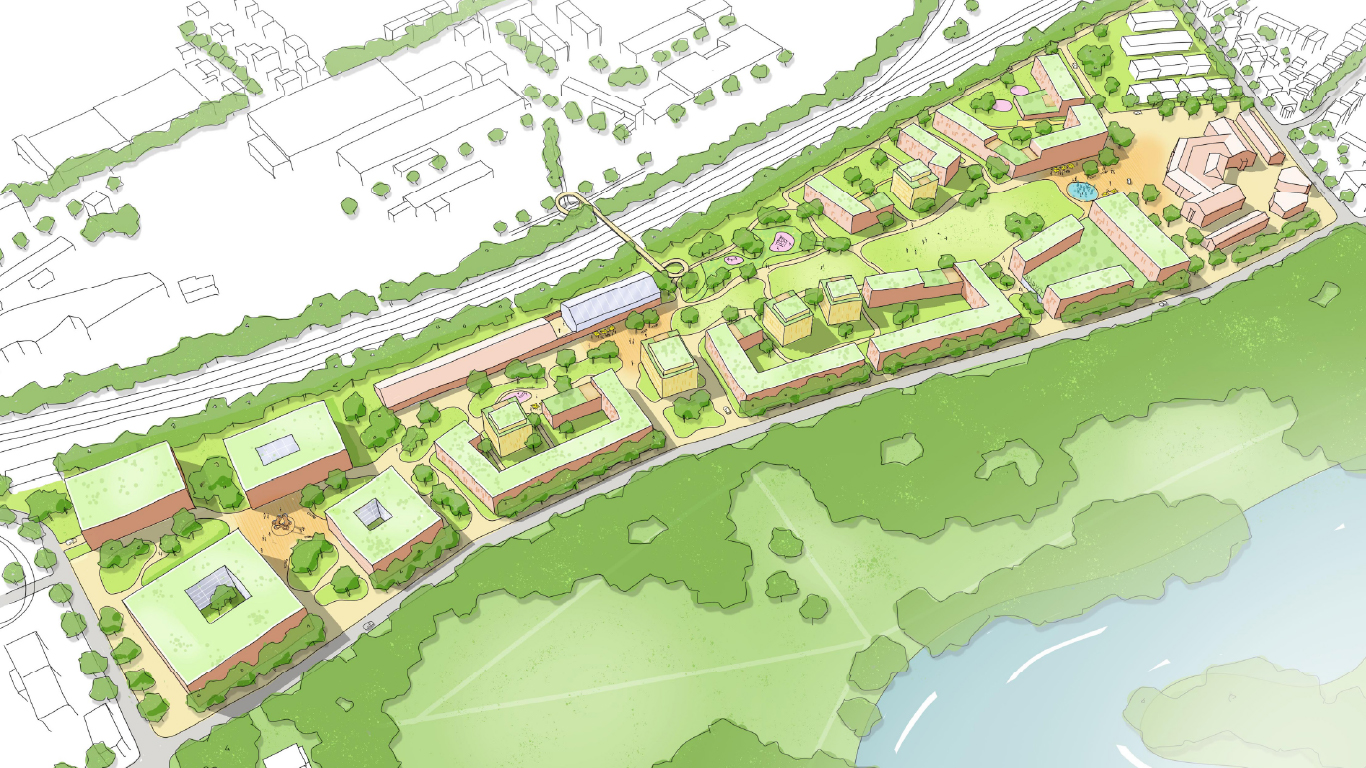On a brownfield site in Gotha, Germany a new car-free district imagines a neighborhood centered on an urbane, pedestrian greenway rather than asphalt corridors of vehicular traffic. The greenway links a mix of uses that offers residents and visitors the chance to live, work and play in a healthy, stimulating environment where all the usual urban amenities are within a ten minute walk. The new Incubator Campus at the eastern end links Gotha to a regional innovation system within an established automobile industry. The Old Slaughterhouse at the opposite end joins the community to a local gastronomical tradition. The central Quartiers Plaza offers residents a chance to shine, putting their skills and wares on display at the communal greenhouse or market hall. A range of dwelling sizes addresses demographic change and meets the need for smaller homes for smaller households. A coherent public realm supports the evolution of a socially diverse yet cohesive community.

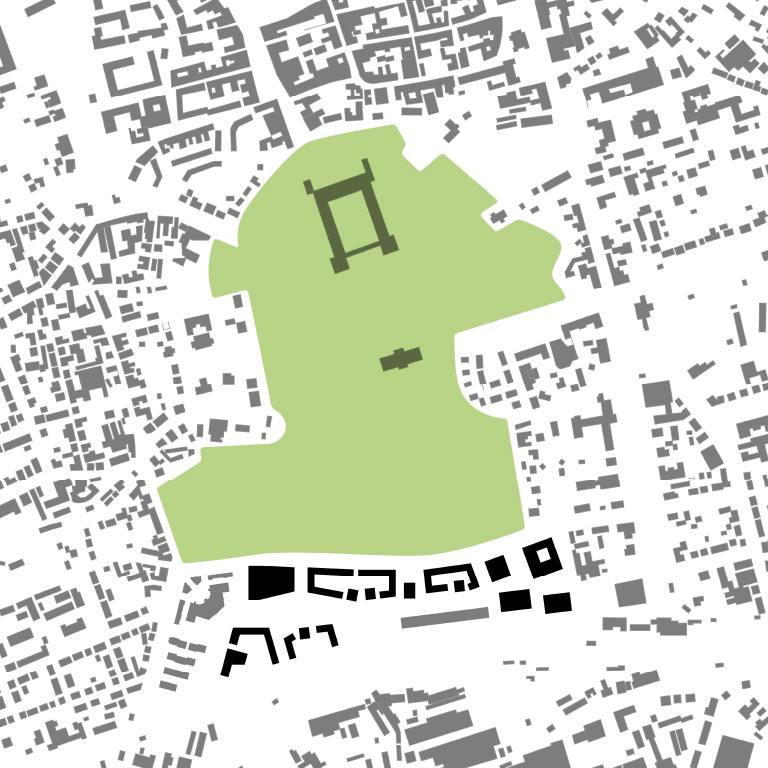
On 10 hectares at the southern edge of the city, between Schlosspark and the main rail line, a mix of uses is reflected in a mix of building typologies. Prevelant among these is the perimeter block, already a dominant typology in the local urban fabric.
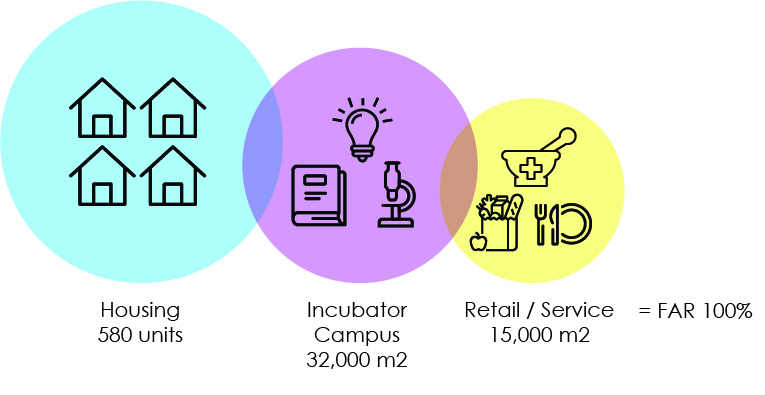
Several existing features are influential, such as the transformation of the Old Slaughterhouse to gastro-hub. Another existing building of unusual form, a city block long, is adapted to serve communal purposes such as greenhouse and local market. To the east, the Main Station is the node in the regional rail network from which the development will benefit.

A central greenway free of vehicular trafffic traverses the site and serves as the public realm linking all primary functions. Its changing width provides the space for various forms of public engagement in park, plaza or playground. The large area of planted and permeable surfaces retains stormwater through surface infiltration and bio-swales.
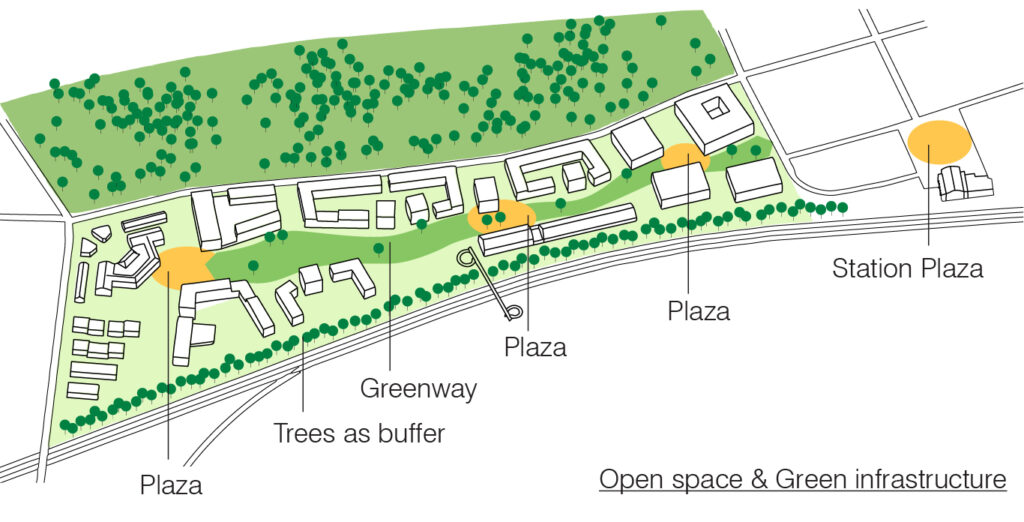
The mobility concept leverages the site’s good connectivity with local (Bus) and regional (Train) public transport systems in order to limit vehicular traffic to the periphery. One level of underground parking below the perimeter blocks provides residents and users with a permanent parking solution.

The functional mix incorporates both a regional and local outlook. The Incubator Campus expands a regional innovation system fueled by the automotive industry. Its position near the Main Station aims to maximize its catchment area and attract students, industry professionals and entrepreneurs. The residential component seeks to rectify the deficiency in the local housing market.

While housing in the region is in short supply, demographic change has also led to an increase in smaller households of 1-2 persons. In contrast, existing housing stock often consists of larger homes. A flexible building typology seeks to address the gap, providing a fluid supply of smaller and affordable homes.
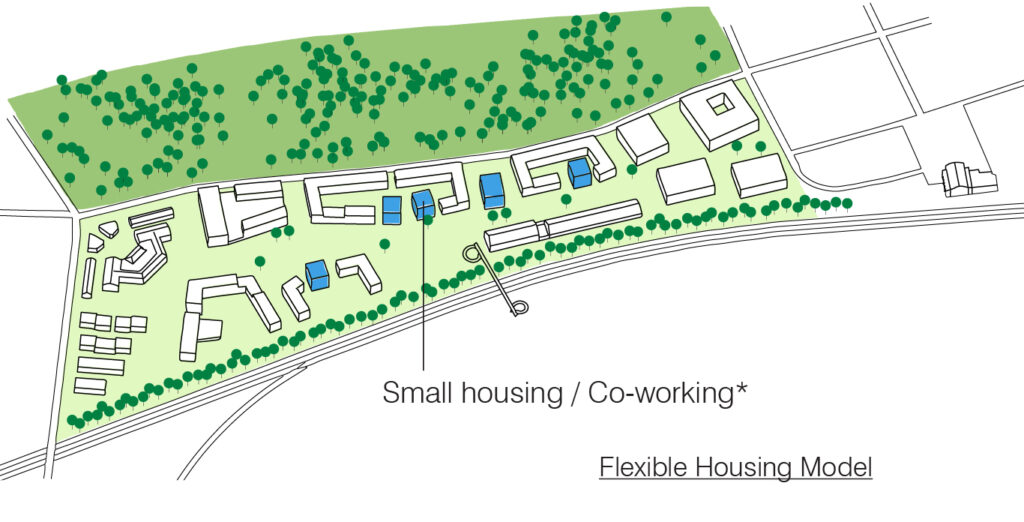
The flexible building typology provides space ready to adapt to local demand. Students and hopeful entrepreneurs at the Incubator Campus may wish to locate themselves in Gotha more permanently. The availability of suitable housing and/or co-working space in the immediate vicinity offers them the means to easily integrate within the community.

The perimeter blocks house a range of household types. The typical floor plan offers a range of unit sizes from 1-room studios to 1, 2, 3 and 4 bedroom units for families. All units are orientated to receive direct sun for at least part of the day.
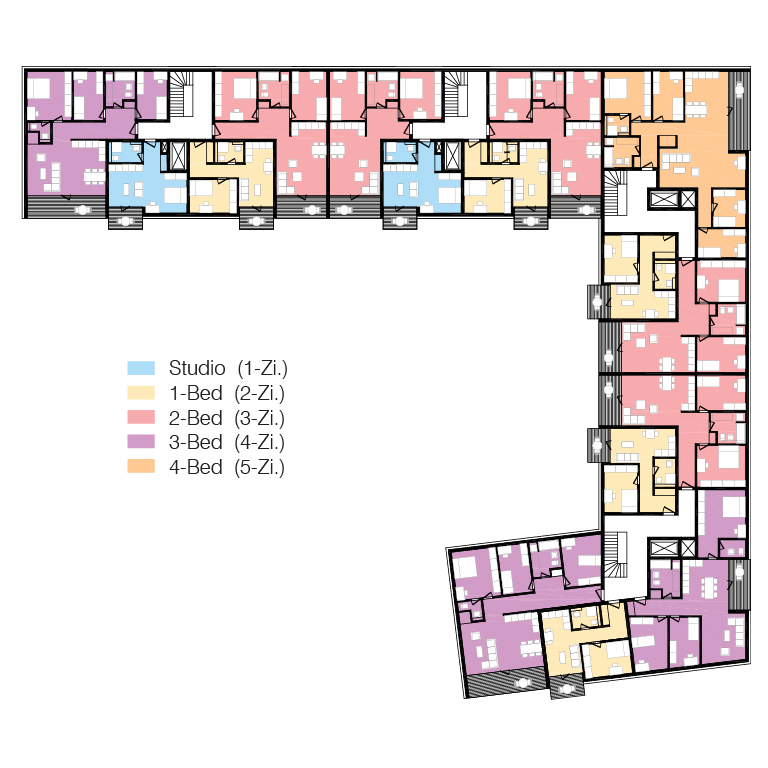
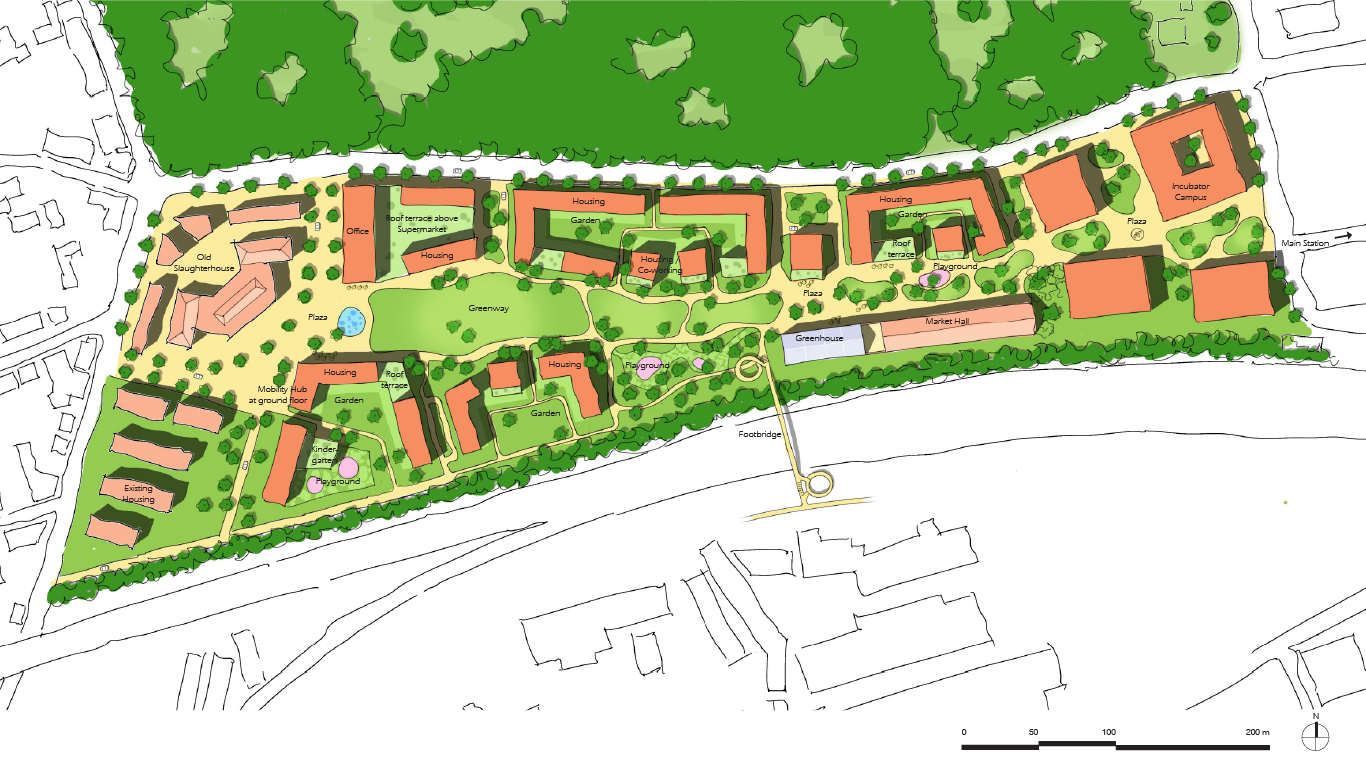

The public realm plays the lead role in the organization of the plan. This collective landscape provides residents not only space to co-exist but also the means to co-create. Whether in park, plaza or garden, users can find the space for play, leisure or commerce. A range of public, semi-public and semi-private spaces offer the opportunity to engage in public life to a degree that suits age and temperament. This diversity of function and space, and all within reach of a short, safe walk, is the real freedom of urban life.
